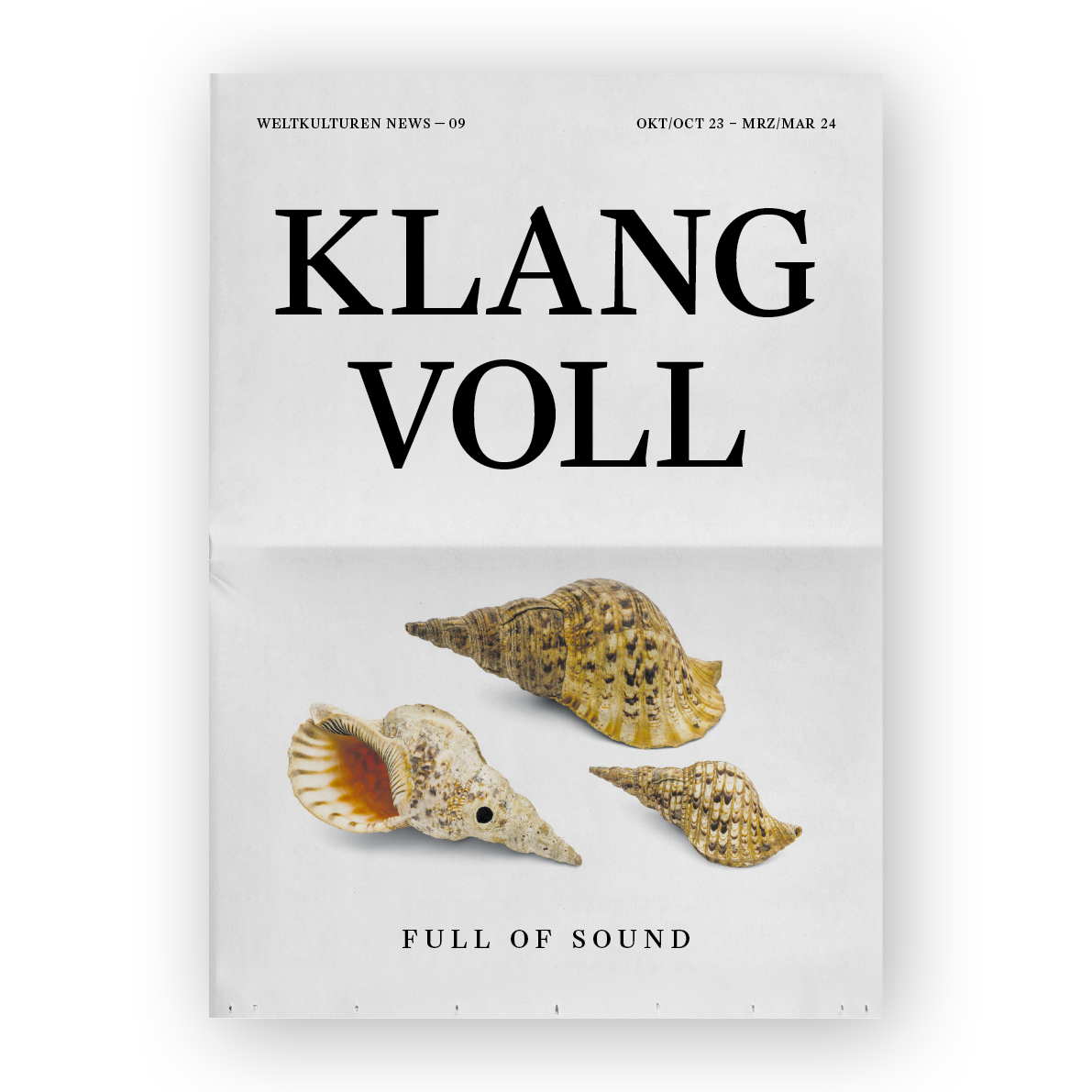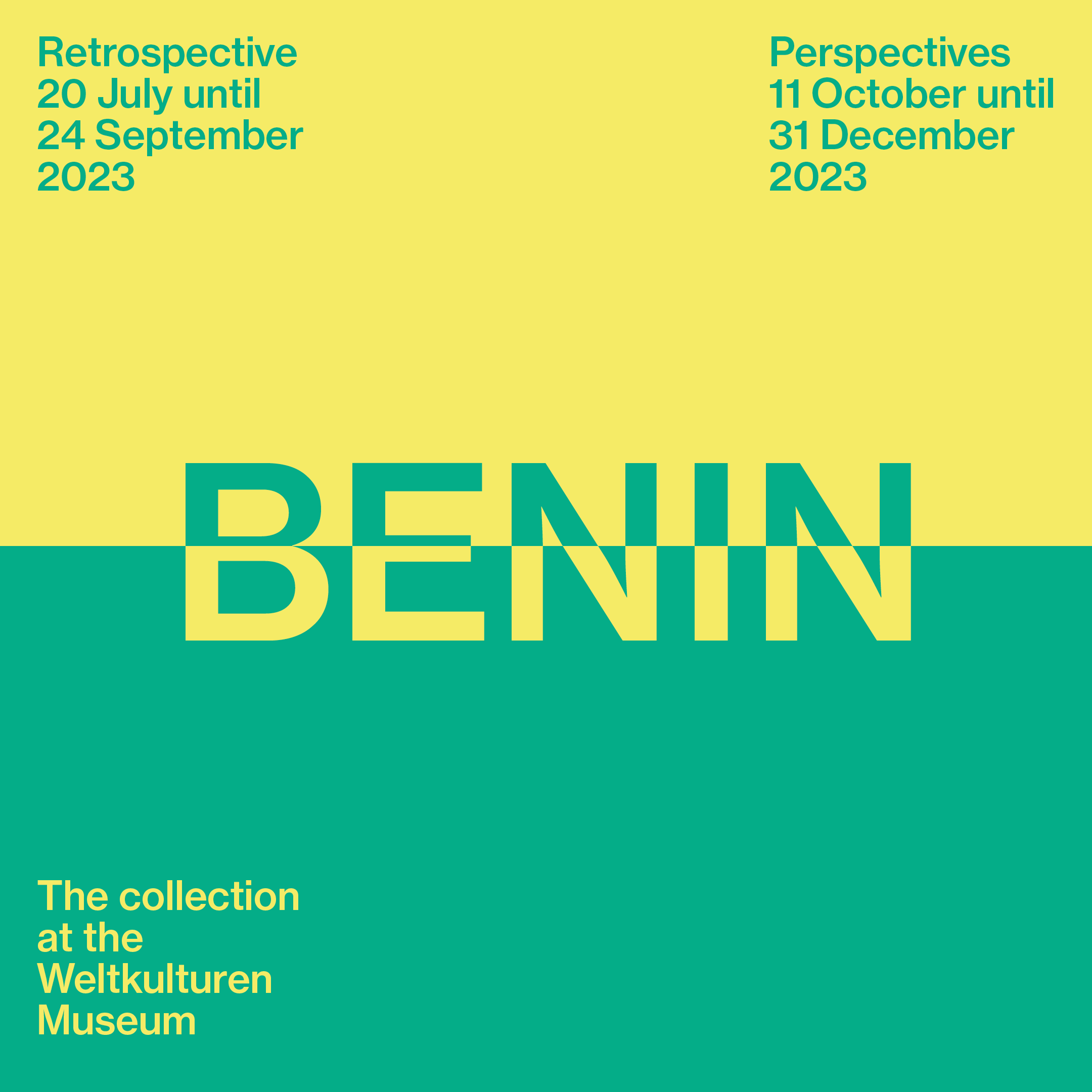INTERVIEW
 Osaze Amadasun. „Benin. The collection at the Weltkulturen Museum. Perspectives.“ Photo: Wolfgang Günzel
Osaze Amadasun. „Benin. The collection at the Weltkulturen Museum. Perspectives.“ Photo: Wolfgang Günzel
"Reimagining art from the Kingdom of Benin"
Illustrator and designer Osaze Amadasun in conversation with the curators Julia Friedel and Audrey Peraldi
The artist, who lives in Lagos, Nigeria, has contributed two works to the exhibition “Benin. The Collection at the Weltkulturen Museum. Retrospective/Perspectives”. Visitors will be able to see the exhibition until 31 December 2023.
Julia Friedel: In what way has the kingdom of Benin inspired your work? / Why did you decide to work on this topic of Benin kingdom?
Osaze Amadasun: It all began in 2016 with a university project where I was tasked with designing a memorial park in honour of Oba Esigie. While searching online for reference materials for my design, I realized that there weren't a lot of paintings depicting historical events and individuals in pre-colonial Benin. As a large majority of Benin art is stylised, it became a lot more difficult for me to realistically imagine how the locals and scenery of the kingdom looked back then. In an attempt to bridge this imagination gap, I became inspired to paint my own interpretation of Benin's history, as well as create other modern visual expressions inspired by the culture.
Audrey Peraldi: Do you remember the first time you saw Benin art?
OA: As far back as I can remember, the first time I came across Benin art was in the late 90s. There was a television station known as ITV (Independent Television, Benin) which I watched daily back then. The station's logo featured (and still does) the ivory head of Queen Idia. This was my first virtual sighting of Benin art. My first physical encounter, however, came in 1999 when I took part in a fine art competition at the Benin National Museum. There, I got the chance to see some of the Benin objects on display in person.
JF: Would you like to share your perspective on the current debate on Benin art and its restitution?OA: Much has already been said about this topic. There have been constant debates over the ownership of the “Benin bronzes”, as well as whether all the looted objects should be returned back, or remain dispersed in institutions and private collections abroad. In terms of ownership, I am of the opinion that the Benin artefacts morally belong to the Oba of Benin as he is the chief custodian and representative of the Benin culture and its people. With regard to the restitution of the objects, I believe the Oba should have the final say on whether all the artefacts be returned back, or if he wishes for some of them to remain overseas as ambassadors of the culture.
AP: How would you envision the future of Benin objects?
OA: I imagine the future of Benin objects will be a lot more experiential. As artists and curators constantly look to push the envelope, coupled with the ever-changing technological landscape, I envision there may be a lot more immersive iterations of these objects and indeed Benin's history in the future. Media such as augmented and virtual reality (AR/VR), animation, video gaming, amongst others may play a pivotal role in facilitating new and unique expressions of these classical objects for the sake of education, or simply for the viewer's pleasure.
BIO
Osaze Amadasun (b. 1994) is an illustrator and designer currently living and working in Lagos, Nigeria. His works cut across drawing, painting, illustration, graphic design and digital media which he uses to reflect the diverse culture of his environment. Amadasun often explores themes around the ancient Benin kingdom in his works using media such as painting, playing cards, and t-shirts to express his ideas. His series “Once Upon A Kingdom“ reinterpreted significant events in 16th-century Benin.
Get Your Weltkulturen News here

To the exhibition

